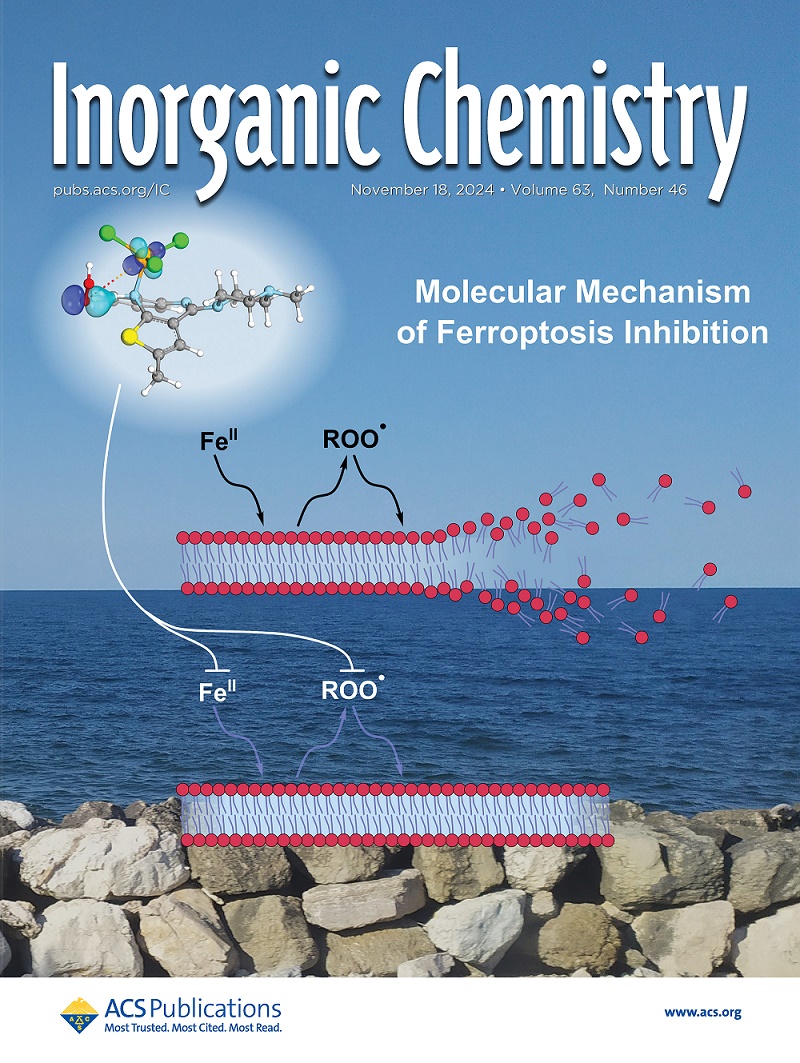Enhanced Oxidative Coupling of Thiols to Disulfides Using the Visible-Light-Responsive POM@MOF Constructed with Ru Metalloligands
IF 4.3
2区 化学
Q1 CHEMISTRY, INORGANIC & NUCLEAR
引用次数: 0
Abstract
The photocatalytic oxidative coupling of thiols to disulfides by using visible light represents an economically viable and environmentally sustainable strategy. A novel POM@MOF photocatalyst (Ru–CdS–SiW) was synthesized through the encapsulation of Keggin-type [SiW12O40]4– within a MOF composed of Ru metalloligands and {Cd4S2O16} clusters. In this structure, the incorporation of POMs to the MOFs reduced the charge transport distance, facilitated the separation and transfer of photogenerated charges and holes, and prevented the recombination of electron–hole pairs. The Ru–CdS–SiW catalyst demonstrated exceptional catalytic performance, achieving a 98.1% yield in the S–S bond formation from 4-methylthiophenol coupling with an apparent quantum yield of 4.8% at 440 nm. Through comprehensive exploratory experiments and electron paramagnetic resonance (EPR) measurements, we elucidated the mechanism underlying the photoinduced oxidative coupling of thiols. Notably, this catalytic reaction operates under mild visible-light conditions and exhibits remarkable recyclability, presenting significant potential for applications in sensitive systems, such as protein disulfide bond formation.

求助全文
约1分钟内获得全文
求助全文
来源期刊

Inorganic Chemistry
化学-无机化学与核化学
CiteScore
7.60
自引率
13.00%
发文量
1960
审稿时长
1.9 months
期刊介绍:
Inorganic Chemistry publishes fundamental studies in all phases of inorganic chemistry. Coverage includes experimental and theoretical reports on quantitative studies of structure and thermodynamics, kinetics, mechanisms of inorganic reactions, bioinorganic chemistry, and relevant aspects of organometallic chemistry, solid-state phenomena, and chemical bonding theory. Emphasis is placed on the synthesis, structure, thermodynamics, reactivity, spectroscopy, and bonding properties of significant new and known compounds.
 求助内容:
求助内容: 应助结果提醒方式:
应助结果提醒方式:


